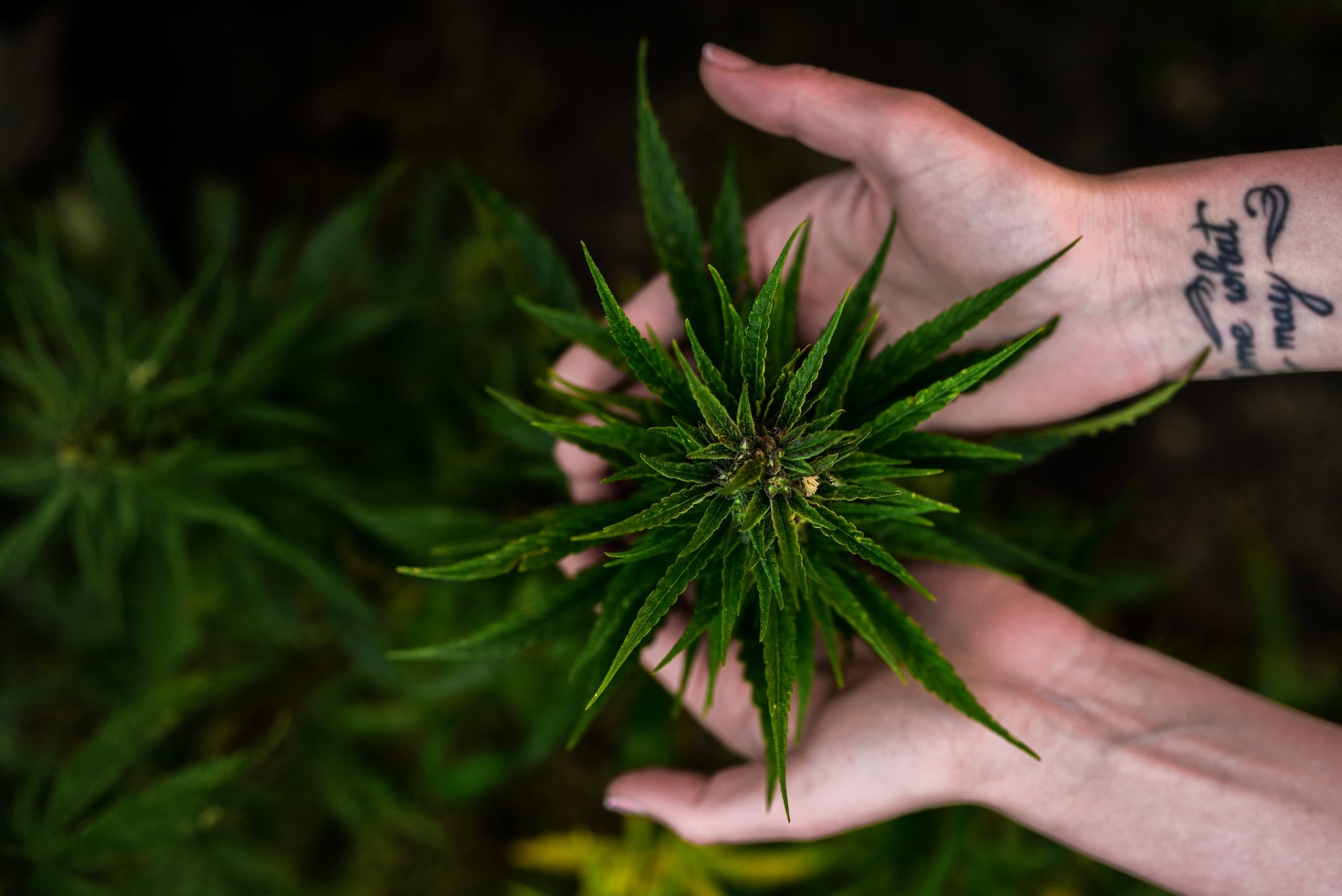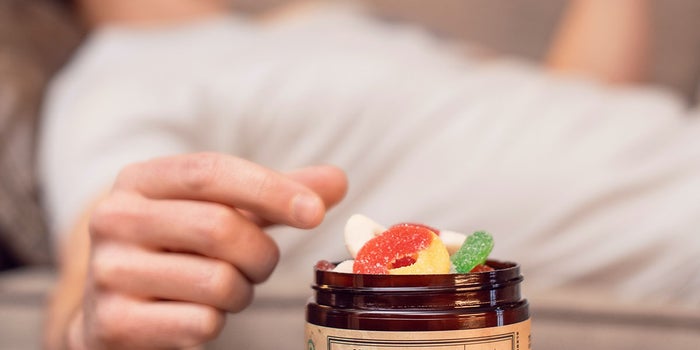Table of Contents
- What is Fimming?
- What is the Difference Between Fimming and Topping
- History of Fimming
- Why Fim Cannabis Plants?
- When to Fim Your Cannabis Plant
- How to Fim Cannabis
- Other Methods
- Pros and Cons of Fimming
- Frequently Asked Questions
Cultivating cannabis is a pursuit of finesse, requiring expertise, endurance, and enlightenment. Fimming cannabis, among the manifold methods of maximizing yield, has gained traction in recent years. This exposé delves into the depths of fimming, its indispensability, and its capacity to augment the growth of your cannabis plant. So, let’s dive right in!
What is Fimming?
Fimming is an advanced high-stress training (HST) technique utilized by cannabis cultivators to accentuate the number of burgeoning locations on a plant, thereby augmenting its overall yield. The term “fimming” is an acronym for “F**k, I missed,” which embodies the relatively inadvertent disposition of the technique’s inception.
What is the Difference Between Fimming and Topping
Fimming and topping are often confused, but they are distinct techniques. While both involve cutting the plant’s growth tip to encourage branching, fimming targets the tips of new growth without removing the entire node. Topping involves cutting off the entire top growth, leaving a clean cut across the stem.
History of Fimming
The fimming technique was discovered accidentally by a grower who failed to perform a complete topping on their cannabis plant. The partial cut resulted in a bushier plant with more budding sites, which led to the development of this unique and beneficial technique.
Why Fim Cannabis Plants?
Fimming offers several benefits to cannabis growers, including:
Increased Yield
By encouraging branching and increasing the number of budding sites, fimming can significantly boost a plant’s overall yield.
Improved Light Distribution
Bushier plants with more branches allow for better light distribution, ensuring that all plant parts receive adequate light exposure for optimal growth.
Enhanced Airflow
Fimming promotes a more open plant structure, which improves airflow and helps prevent issues like mould and mildew.
When to Fim Your Cannabis Plant
Identifying the Right Time
The best time to fim a cannabis plant is when it has developed 3-5 nodes, usually within the vegetative growth stage. Fimming too early may stunt growth, while fimming too late may not provide enough time for the plant to recover and develop new branches.
Signs to Avoid Fimming
If a plant is under stress from environmental factors, pests, or disease, it’s best to avoid fimming, as the added stress could further harm the plant.
How to Fim Cannabis
Fimming (short for “F***, I missed”) is a pruning technique used to increase the yield of a cannabis plant by promoting the growth of multiple colas (flowering sites). Here’s a detailed step-by-step guide on how to fim a cannabis plant:
- Choose the right time: Fimming is best done during the vegetative stage of the plant’s growth when it has at least 3 to 5 nodes (sets of leaves) but before it enters the flowering stage. This allows the plant to recover and grow new branches before it starts to focus on bud production.
- Sterilize your tools: Use a sharp, sterilized pair of scissors or a razor blade to cut. Sterilize the cutting edge with rubbing alcohol to prevent the spread of bacteria or diseases.
- Identify the growth tip: Locate the newest growth tip at the top of the main stem, where the new leaves emerge. This is the apical meristem responsible for the plant’s vertical growth. Cutting it will encourage the growth of multiple branches and colas.
- Cut the growth tip: Position the cutting tool about 75-80% through the growth tip, not cutting through the entire tip. The goal is to remove the top portion of the growth tip, leaving behind a small portion of the stem.
- Monitor the plant’s recovery: The plant may take a few days to recover from the stress of the cut. Ensure that the plant receives adequate water, nutrients, and light during this time. The plant should start to develop multiple new growth tips within a week.
- Train the new growth: As the new growth tips emerge, use low-stress training (LST) techniques such as bending, tying, or using a trellis to help spread out the new branches and expose them to light. This will maximize their growth potential and increase the overall yield of the plant.
- Maintain plant health: Continue to monitor and care for the plant, providing it with the necessary nutrients, water, and light. Prune any dead or dying leaves to maintain airflow and prevent diseases.
- Transition to flowering: Once the plant has reached the desired size and structure, transition it to the flowering stage by adjusting the light schedule to 12 hours of light and 12 hours of darkness per day.
- Harvest when ready: Monitor the plant during the flowering stage and watch for signs of maturity, such as the trichomes turning from clear to cloudy and then amber. Harvest the buds when they’re ready, typically after 8-12 weeks of flowering, depending on the strain.
By using the fimming technique, you’ll promote the growth of multiple colas, which can lead to a higher yield of cannabis buds at harvest time.
Tools You’ll Need
- Sterilized scissors or a sharp knife
- Gloves (optional)
- Rubbing alcohol for sterilization
- Fimming vs. Other Training Techniques
Other Methods
Cannabis growers use several other training techniques to maximize yield and improve plant health. Let’s explore how fimming compares to some of these methods:
Topping
As mentioned earlier, topping involves cutting off the entire top growth of the plant. While this technique also encourages branching and increased yield, it can be more stressful for the plant than fimming, leaving some growth tips intact.
Low-Stress Training (LST)
Low-Stress Training involves gently bending and tying down branches to promote an even canopy and increased light exposure. LST is less invasive than fimming and topping but may not provide as significant a boost in yield.
Super Cropping
Supercropping involves carefully bending and slightly damaging the plant’s stems to promote increased branching and yield. This technique can be more challenging to execute than fimming and may require more recovery time for the plant.
Common Mistakes and How to Avoid Them
- Cutting too much or too little: When fimming, cutting approximately 75-80% of the growth tip is essential. Cutting too much can severely stress the plant, while cutting too little may not achieve the desired effect. To avoid this mistake, carefully examine the growth tip before making the cut, and ensure you leave a small portion of the stem intact.
- Fimming during the wrong stage: Fimming should be done during the vegetative stage, as it allows the plant time to recover and develop new branches. Fimming during the flowering stage can cause stress and reduce overall yield. To avoid this mistake, monitor your plant’s growth and perform fimming when it has 3 to 5 nodes but before it starts flowering.
- Using unsterilized tools: Cutting with unsterilized tools can introduce bacteria or diseases to your plant, causing potential harm. To avoid this mistake, always sterilize your cutting tools with rubbing alcohol or another disinfectant before making the cut.
- Overlooking plant health: A healthy plant will recover more quickly from fimming and yield better. Ignoring signs of poor health or nutrient deficiencies can hinder the plant’s ability to bounce back. To avoid this mistake, regularly monitor your plant’s health and address any issues with nutrients, water, or light as needed.
- Inadequate training after fimming: The goal of fimming is to create multiple colas that receive equal light exposure. Neglecting to train the new growth can lead to overcrowded branches and reduced yields. To avoid this mistake, use low-stress training (LST) techniques such as bending, tying, or using a trellis to spread out the new branches and expose them to ample light. This will ensure that each cola grows to its full potential and contributes to a higher overall yield. Maintain proper airflow within the canopy by pruning dead or dying leaves, and be vigilant about potential pests or diseases that may affect the plant’s health.
By being aware of and avoiding these common mistakes, you can successfully fim your cannabis plant and achieve a higher yield at harvest time.
Pros and Cons of Fimming
Pros:
- Increased yield
- Improved light distribution
- Enhanced airflow
- Less stress to the plant compared to topping
Cons:
- May slow growth temporarily
- Requires careful execution to avoid mistakes
Conclusion
Fimming cannabis is an effective high-stress training technique that can significantly increase your plants’ yield while promoting better light distribution and airflow. By understanding the principles and benefits of fimming and following the step-by-step guide provided, you can maximize your cannabis plants’ potential and enjoy the bountiful harvest you deserve.
Frequently Asked Questions
What does “fimming” stand for?
Fimming is an acronym for “F**k, I missed,” referring to the accidental discovery of the technique.
Can I fim an auto-flowering cannabis plant?
Yes, you can fim auto-flowering plants, but it’s crucial to do so early in the vegetative stage to allow enough time for recovery and new growth.
How long does it take for a cannabis plant to recover from fimming?
Cannabis plants typically begin to show new growth within a week after fimming.




